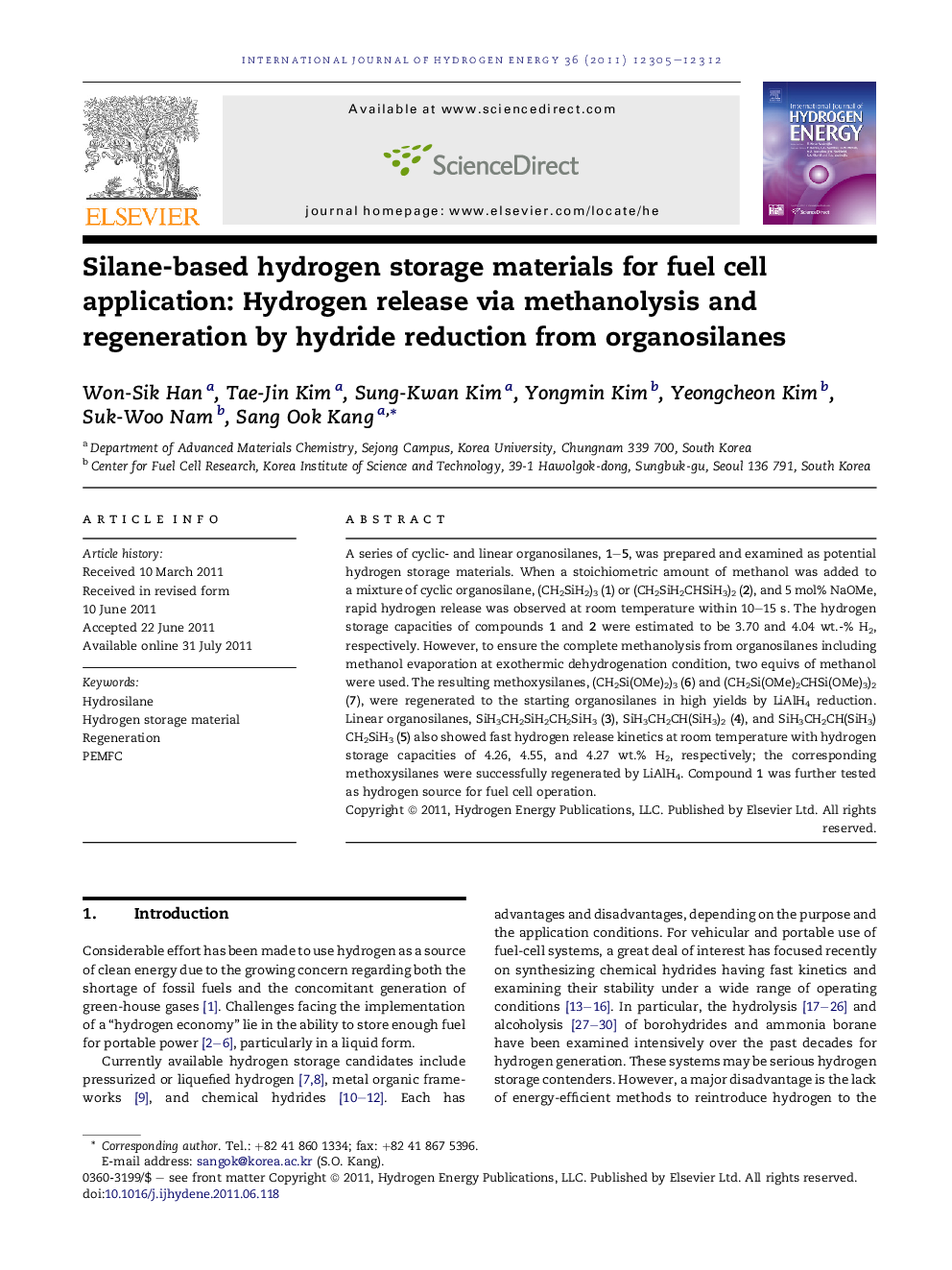| Article ID | Journal | Published Year | Pages | File Type |
|---|---|---|---|---|
| 1282431 | International Journal of Hydrogen Energy | 2011 | 8 Pages |
A series of cyclic- and linear organosilanes, 1–5, was prepared and examined as potential hydrogen storage materials. When a stoichiometric amount of methanol was added to a mixture of cyclic organosilane, (CH2SiH2)3 (1) or (CH2SiH2CHSiH3)2 (2), and 5 mol% NaOMe, rapid hydrogen release was observed at room temperature within 10–15 s. The hydrogen storage capacities of compounds 1 and 2 were estimated to be 3.70 and 4.04 wt.-% H2, respectively. However, to ensure the complete methanolysis from organosilanes including methanol evaporation at exothermic dehydrogenation condition, two equivs of methanol were used. The resulting methoxysilanes, (CH2Si(OMe)2)3 (6) and (CH2Si(OMe)2CHSi(OMe)3)2 (7), were regenerated to the starting organosilanes in high yields by LiAlH4 reduction. Linear organosilanes, SiH3CH2SiH2CH2SiH3 (3), SiH3CH2CH(SiH3)2 (4), and SiH3CH2CH(SiH3)CH2SiH3 (5) also showed fast hydrogen release kinetics at room temperature with hydrogen storage capacities of 4.26, 4.55, and 4.27 wt.% H2, respectively; the corresponding methoxysilanes were successfully regenerated by LiAlH4. Compound 1 was further tested as hydrogen source for fuel cell operation.
Graphical abstractFigure optionsDownload full-size imageDownload as PowerPoint slideHighlights► New hydrogen-rich organosilanes with high boiling point has been prepared. ► Developed organosilanes can be reused via repetitive methanolysis. ► Methanolysis of organosilanes reaching a maximum H2 storage capacity of 4.55 wt%. ► Stable cyclic-organosilane, (CH2SiH2)3, was used as a hydrogen source for a PEMFC.
